
There are natural phenomena that are true spectacles for the human eye, such as sunrises, sunsets, the night sky on a clear night without artificial light pollution, or the “meeting of the waters ” as it has been called the phenomenon that happens when two large rivers coincide in their trajectory without apparently mixing for a long stretch.
The “Meeting of the waters” as a tourist place.
Tourism companies in Manaus have taken advantage of the meeting of the waters of the Rio Negro with the Amazon River , turning it into one of the most iconic tourist places in the Brazilian Amazon in the region.
To enjoy this natural spectacle you can stay in any of the 10 best hotels in Amazonas-Brazil
The exploitation of conscious tourism may be the key to ending other industries that are terribly harmful to the health of the jungle involving fires and deforestation such as logging and the expansion of licit or illicit monocultures such as oil palm or coca.
But before entering fully into the subject, we must answer some simple questions that have led scientists to formulate explanations that are not so simple, and in some cases to unsuspected adventures.
Why is the water in many rivers, seas and oceans blue?
Water is a colorless substance. Its color is only appreciated when it is presented in large volumes, such as in the sea, in a river or in a lake. The white light that comes from the sun contains all the colors of the rainbow.
When that light passes through things, they only absorb one of those colors.
Those it does not absorb, it transmits, reflects or scatters.
Water selectively absorbs some colors of light. Those that absorb are those that have the lowest frequency of the visible spectrum, such as red and orange, and transmit blue and green tones.
A beam of light passing through the water will only be perceived as a blue hue, and we will not see the red and orange tones. It is known that the greater the volume of water, the greater the amount of absorption of light passing through the water, and the more blue will be seen.
People believe that the color of the water in a large volume is the reflection of the color of the sky. That is partly true.
The surface of the water only reflects a small part of the light from the sky, overlapping the blue of the water itself. But it only contributes 2% of the color of the water.
Why is the water in some rivers brown?
We do not always see blue in river water. She reflects other colors. If the waters of a river are cloudy, the river looks brown, as a result of transporting a large amount of suspended elements, such as silt and clay sediments, or a high concentration of minerals, or heavy materials.
The color of the rivers can also be a consequence of a very high concentration of microorganisms, such as algae or bacteria, which are only seen in large concentrations, creating different shades.
Two united rivers that seem not to mix.
A beautiful spectacle occurs when two rivers meet, with waters of different colors, such as black and brown.
This phenomenon happens in many parts of the world.
For example in Europe, where there are many photographs that illustrate it in areas of Germany.
The surprising case of the Amazonian rivers.
In the Orinoco river basin, it is produced in the confluence area of the Caroní river with the Orinoco river.
In the Amazon River basin it is observed when the Rio Negro falls into the Amazon River, full of mud, and brown in color. The waters of these two rivers are not unified, and run in parallel, each with its own color, for a long stretch that reaches 6 km.
Why don’t rivers mix their color?
One always wonders why those rivers don’t mix their color.
Description of the waters of the Negro River
The waters of the Río Negro are dark in color, due to the area where it is born: swampy, jungle, poor in nutrients and minerals.
It is known as the longest Black River in the world, and is classified as a river of very poor biological diversity, with a low population of fish.
It is also said that its color is due to its very high concentration of humic acids.
Humic acids are the main constituents of humus, matter originating from the organic decomposition of the soil and closely related to its fertility.
The Negro River is a river with an acidic pH, with waters of very low conductivity, with relatively high ionic concentrations and less richness in animal species.
Description of the waters of the Amazon River
The waters of the Amazon River are brown in color, due to its muddy nature, which it collects on its way through various lands and carries them as suspended matter. Each river has its characteristics, which are sometimes opposed, making it difficult for them to merge.
The key: temperature.
Apparently the fundamental reason for the difficulty of mixing is due to the temperature of the river waters.
The Negro River flows slowly, at a speed of 2 km per hour, and its waters have an average temperature of 28 ° C. The Amazon River, for its part, is mighty. Its waters run on average at 6 km per hour and have a temperature of 22 °C.
That difference in temperature defines the difference in density between the two waters.
Two masses with different densities and mineral properties do not mix immediately. For this reason, both rivers flow together for a long distance, until finally, after about 6 km, they mix.
Why is the Negro River black?
There is one point, however, that has not been resolved: why is the Negro River black? One reads that it is due to its high content of humic acids, which causes its poverty in nutrients and in fish.
But humus, isn’t it rich in decomposed organic matter, and a favorable factor for fertility? Many species of fish feed on phytoplankton and fruit from trees that grow along river banks.
A scientific adventure to clarify dark knowledge.
Carlos A. Lasso, a Venezuelan researcher asked himself the same question. And he traveled to the Negro River, in the Bolivian Amazon, to investigate, in the year 2000, in the upper reaches of the river, at various observation points, what were the characteristics of the waters and their chemical composition, making some ecological and biogeographical considerations. (one).
And he found two surprises.
The first was that the dark color of its waters is due, not to its high concentration of humic acids, which are scarce. The pH of the Negro River is not acidic, but rather neutral to slightly basic.
Its dark color is due, according to him, to the fact that the waters flow, in the upper part of the river, over granite outcrops or dark colored slabs.
In a strict sense, the Negro River is more of a clear-water river.
The second surprise is that the Negro River is not as poor in fish species as it is said, since he estimated them at 108 species.
We obtained this finding in other investigations.
A study by the State University of Campinas (Unicamp), in Brazil, found that the inhabitants of the right bank of the Negro River, in the vicinity of Manaus, depend on 75% of their protein availability from fishing carried out in that river ( two)
Bibliography.
1 . Lasso, CA 2001. The fishes of the upper Río Negro, Bolivian Amazon: composition and ecological and biogeographical considerations. Interciencia, Vol. 26, No. 6, June. P.237. Source
2 . Research. FAPESP. 2002. Edition 77, July. magazine pesquisa.fapesp.br/es/2002/7/01/ the-fishes-and-the-taboos-of-the-rio-negro.
Related Posts
January 22, 2020

3 scientific studies on ayahuasca
January 13, 2020

3. The Utopia of the Earthly Paradise in the Amazon Rainforest
January 11, 2020
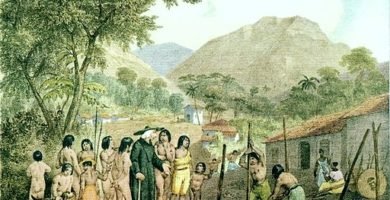
2 . Missionaries in the Amazon Rainforest (17th century)
January 10, 2020
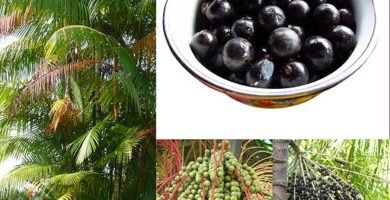
Acai, asai, asaí or açaí: a fruit that cures EVERYTHING!
December 21, 2019
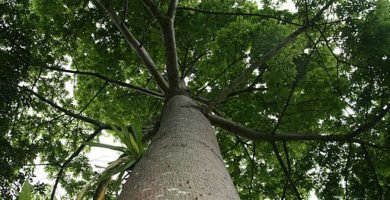
🥇 The Great Amazonian Legend
December 14, 2019
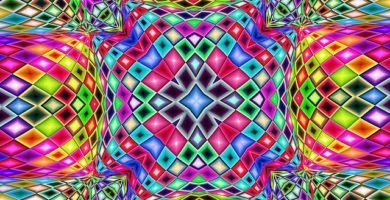
Amazonian myths and legends about ayahuasca
November 13, 2019

Amazon River Dolphin – Facts, Diet, Habitat, Species and more!
November 7, 2019

Deforestation in the Amazon Rainforest
October 31, 2019
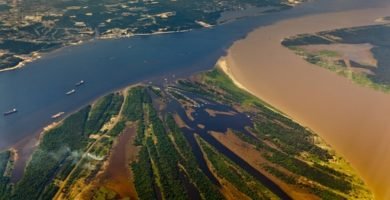
Amazon River tributaries
This post is also available in:
![]() Español (Spanish)
Español (Spanish)
